As more tourism destinations sustain high visitor volumes, some are using innovative strategies to manage visitation.
Banff National Park (BNP) is one such place. It is Canada’s oldest and most visited national park, offering scenic outdoor adventures in the Canadian Rockies.
The park anticipated record visitation for summer 2017. More visitors would bring in more business, but would also create new challenges. Would on-the-ground experiences continue to meet visitor expectations? Parks Canada, Town of Banff, and Banff & Lake Louise Tourism partnered together to address concerns related to high visitor volume.
Destination Think worked with the partnership to develop and implement a communications and marketing plan using the company’s collaborative process. The result? Effective messaging influenced visitors to use transit and help preserve the park’s world-class experiences.
Background: Banff National Park group seeks to proactively manage rising visitation
Since 2012, visitor volume to Banff National Park had been increasing by a yearly average of 5%.
Then in 2016, the Canadian government made an announcement: Parks Canada would waive 2017 entrance fees to its national parks in celebration of Canada’s 150th anniversary.
Many observers anticipated a dramatic spike in visitation during the 2017 summer season, including Banff & Lake Louise Tourism (B&LLT), the destination marketing organization (DMO) in Banff National Park.
Here’s why. Banff National Park is a favourite getaway spot for visitors from all over the world thanks to its majestic mountain scenery. Many people, keen to explore their surroundings, drive to and from Banff, Lake Louise, and other scenic sites in the park.
Drive being the keyword. For decades, many people have brought their RVs, minivans, hatchbacks, and SUVs to visit. However, in recent years, some visitors have become stuck in highway lineups or have struggled to find a place to park.
High traffic volume and congestion on BNP’s highways and roads have caused frustration, hindering visitors who are drawn to the scenic environment. BNP needed a communications and marketing plan to help people understand the best ways to visit and savour the outdoors.
In Banff National Park, these three organizations have a major role in managing tourism and visitation:
- Parks Canada manages the national park,
- Town of Banff manages the municipality, and
- B&LLT manages destination marketing for Banff National Park.
The three took the progressive step of forming a partnership to manage visitor experience in preparation for the record-setting visitation expected in 2017. They asked Destination Think to provide strategic guidance and develop a communications plan.

Image credit: Paul Zizka, Banff & Lake Louise Tourism
Destination Think’s strategic and collaborative process
The strategy team at Destination Think used a collaborative, three-stage process to ensure alignment across the partnership and its stakeholders.
Three stages of strategy development
Discovery: Research by Destination Think revealed challenges, opportunities, and insights specific to BNP. The team reviewed background materials, interviewed members of the partnership, and spoke with tourism stakeholders.
Collaboration: Interactive and creative workshop sessions generated ideas and uncovered potential solutions.
Analysis: Think’s strategists compiled and analyzed all research, ideas, and feedback from participants and stakeholders to find the best solution.
Solution: A communications plan to influence visitor behaviour and maintain a positive experience.
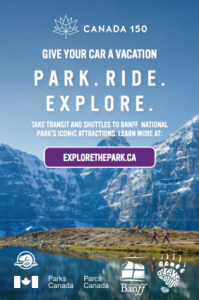 Destination Think considered input from all partners and many stakeholders to design a communications and marketing plan that would educate visitors and residents on how to best enjoy the national park in 2017.
Destination Think considered input from all partners and many stakeholders to design a communications and marketing plan that would educate visitors and residents on how to best enjoy the national park in 2017.
The core message: Be prepared and take transit.
Supporting messages emphasized that the park was ready to welcome visitors for Canada’s 150th anniversary and that the best experiences would happen outside of a vehicle.
Key measures of success included these on-the-ground indicators:
- Ridership on Roam Transit (Banff’s public transit system) over the Banff Avenue bridge.
- Overall ridership on Roam Transit.
- Ridership on the Lake Louise shuttle service.
Execution: Communicating the right message to the right audiences at the right times
With the plan in place, Destination Think’s agency staff designed an array of content and copy to tell the story to five audiences identified in the strategy:
- Calgarians – These are often day visitors who drive to and from the park.
- The business community – Operators and staff who serve park visitors.
- Recreational vehicle (RV) users – These visitors camp overnight in BNP with an RV.
- Overnight visitors – Visitors who stay in the park’s other accommodations.
- Residents – People who live in or around BNP.
The plan also prescribed a proactive approach to addressing the media and purchasing online advertising to support the message.
To communicate the message, Destination Think developed these assets and resources in participation with the BNP partnership.
- Visitor Communication Toolkit for Frontline Staff: An all-in-one resource for tourism staff and management containing key messaging – everything from serving visitors at the hotel front desk to guidelines for delivery drivers.
- RV Guide: Tips for navigating BNP in an RV, including campground locations and parking information.
- Transit Guide: A thorough guide for how to use transit and shuttle services within the park, as well as to and from Calgary.

- Social media content: This made people aware of new transit options and information available online, especially leading up to high-visitation periods like long weekends. The content was served through Parks Canada, Town of Banff, and B&LLT channels.
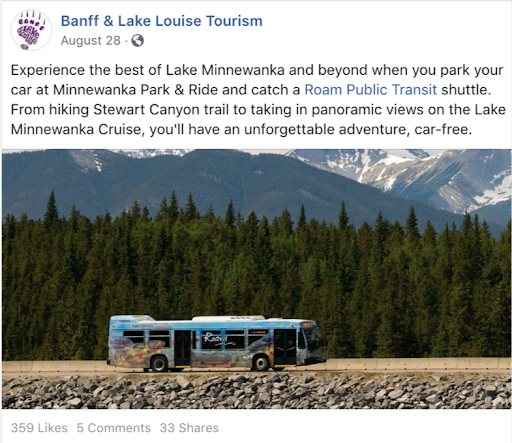
- Explorethepark.ca website: This new website holds all the best travel tips in one place. Visitors can find lesser-visited hidden gems, links to up-to-the-minute parking and highway updates, and all RV and all transit information.
- Printed signage: Large posters were displayed in Banff. Area businesses also displayed tent cards.
These materials made visitors and local stakeholders aware of the transit services available in 2017 and encouraged them to plan.
The communications effort received attention from major media outlets including CBC, Global Calgary, CTV Calgary, Radio Canada, the Calgary Herald, and others. For example, Avenue magazine published the article, “How to Do Banff National Park this Summer Without a Car”.
Result: Communications plan dramatically improves visitor experiences through transit usage
The Banff National Park communications plan changed visitor behaviour and improved the overall BNP experience. It influenced the way travellers planned their visits by encouraging them to use transit and make the most of their time. Bus and shuttle ridership were chosen as key indicators of success because increases would lessen the number of vehicles entering the park and improve the flow of traffic.
An enormous increase in transit ridership
The park hosted 4% more visitors in summer 2017 than the previous year, while transit ridership increased much more over the same period.
 A higher proportion of visitors used transit in 2017 than in 2016.
A higher proportion of visitors used transit in 2017 than in 2016.
Many visitors used the new materials to plan their trips. The new explorethepark.ca website had 58,153 visits, with an average time of 2 minutes and 15 seconds spent engaging with content.
More evidence of an improved park experience
“Chaos was averted. This summer, in my opinion, was a watershed moment for changes that will lead to a lasting impact for Banff National Park,” said [Town of Banff Councillor Stavros] Karlos. “I’m blown away by these numbers. I’m flabbergasted.” (Rocky Mountain Outlook)
Parks Canada reported “very high satisfaction rates from visitors across the country.”
Higher transit usage in 2017 is also linked to factors beyond the scope of this project, but the signs are encouraging. It is incredible to see the surge in ridership fueled by community support and smart strategic planning.
The BNP partnership continued the plan for the 2018 summer season
The three partners and Destination Think built on the success from 2017 to refine the plan for the summer of 2018.
Using a similar strategy to encourage transit use, Destination Think added new tactics to the mix, including digital display ads, Facebook dark posts and carousel posts. This led to more real-time optimization, which allowed the team to fine-tune the results even further.
Destination Think also developed a marketing toolkit for the local industry to use in support of the initiative. The toolkit contained examples of social media posts, website copy and digital display ads.
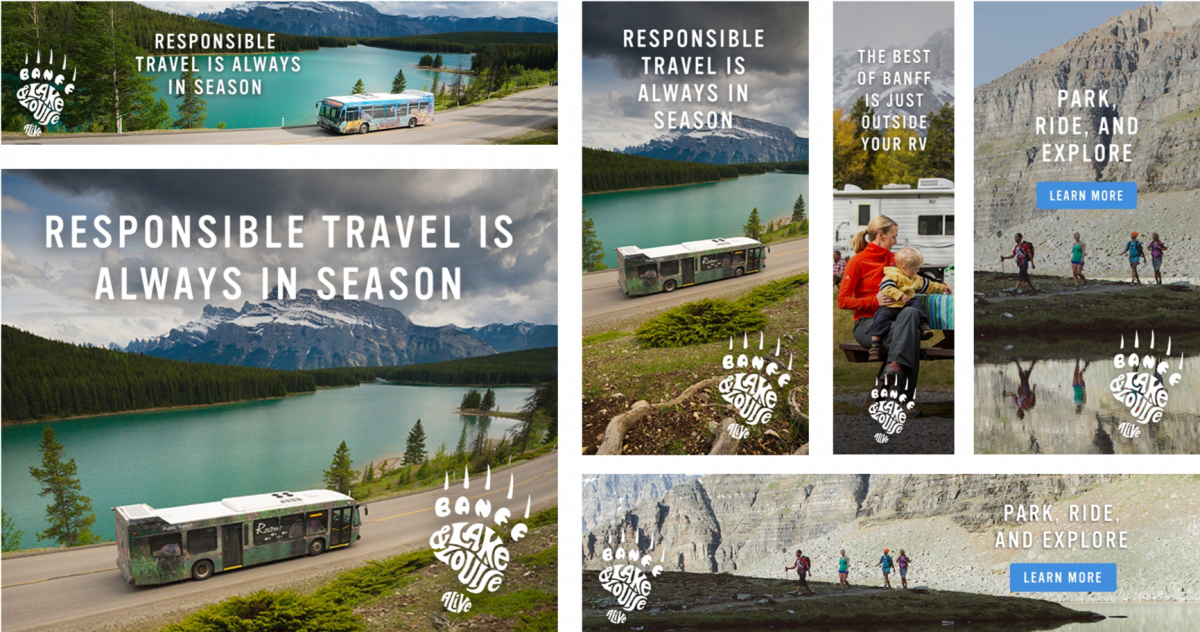
Digital display ads used during summer 2018.
Transit use continues to rise as visitors continue to adopt environmentally friendly travel habits, thanks in part to the communications plan, the collaboration between organizations and participation from the community. Results from 2018 include these highlights:
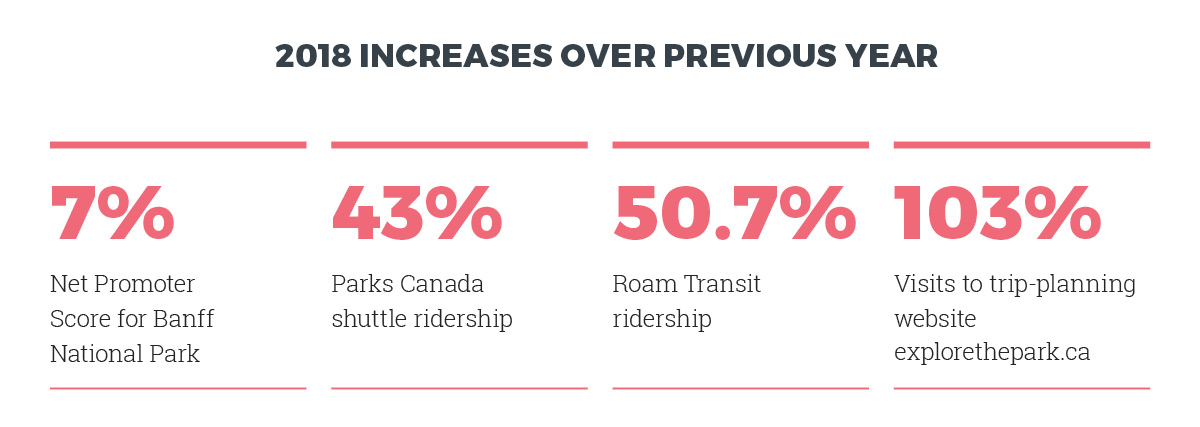 Banff National Park’s 2017 and 2018 communications plans mark more than an incremental shift in visitor behaviour.
Banff National Park’s 2017 and 2018 communications plans mark more than an incremental shift in visitor behaviour.
They show that innovative DMOs and their partners can tackle destination management and communication challenges by leading working together to educate visitors, improve experiences, and ultimately, make better memories.

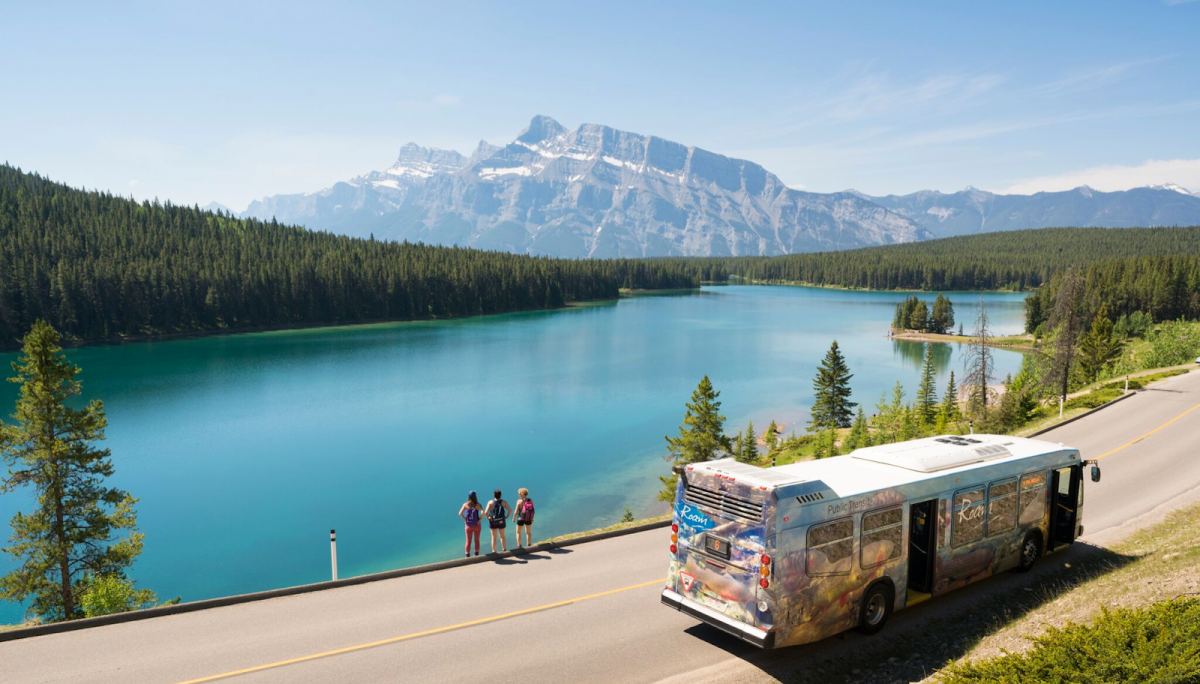







0 Comments